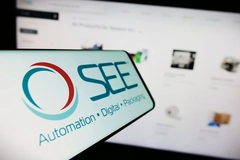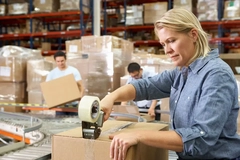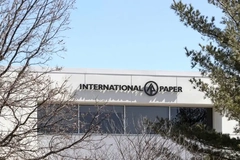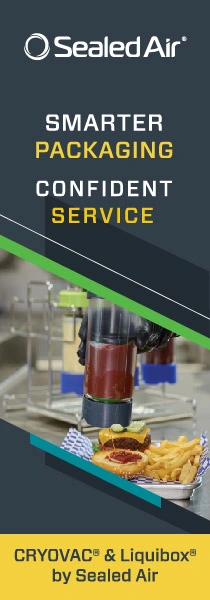Tomra Recycling expert: X-ray sorting tech transforms wood packaging recovery sector
 Jose Matas, head of Waste Emerging Segments at Tomra Recycling (All image credits: Tomra Recycling).
Jose Matas, head of Waste Emerging Segments at Tomra Recycling (All image credits: Tomra Recycling).Tomra Recycling has launched a new edition of its X-TRACT X-ray sorting unit, which can detect and separate wood waste from contaminants.
Packaging Insights speaks to Jose Matas, head of Waste Emerging Segments at Tomra Recycling, about the implications of this advanced sorting technology for the packaging industry.
He argues that as interest in wood and wood-based packaging grows, advancements in wood recycling, such as removing hard-to-recycle content like medium-density fiberboard (MDF), will become increasingly significant.
What are Tomra’s advancements in wood sorting and what is the X-TRACT unit?
Matas: We started in the wood segment more than ten years ago. We came up with the first optical unit in the industry, and it was a revolution. Until then, sorting was only mechanical, mainly to recover impurities from wood.
We saw the potential and decided to develop a specific segment focused on wood recycling machines, perfectly adapted to the industry, which is quite different from other materials we recycle. We accelerated innovation in the last four years and released more applications than ever.
 The use of recycled wood offers many advantages from local accessibility to economical benefits.For example, we released applications capable of recovering wood from construction and demolition material. We can now also sort between solid wood and non-solid (processed) wood, which brings many advantages to the industry. Additionally, we’ve developed applications to recover, clean, and purify MDF.
The use of recycled wood offers many advantages from local accessibility to economical benefits.For example, we released applications capable of recovering wood from construction and demolition material. We can now also sort between solid wood and non-solid (processed) wood, which brings many advantages to the industry. Additionally, we’ve developed applications to recover, clean, and purify MDF.
Regarding the X-TRACT, this year we launched a new version of our flagship machine, which is recognized across the industry.
How does the X-TRACT achieve high purity levels in recycled wood?
Matas: The principle behind X-TRACT is X-ray transmission. Thanks to this technology, we can see inside the material, analyzing its atomic density, almost like the “DNA” of the material.
This allows us to distinguish wood from impurities with great accuracy. The machine achieves purities higher than 98%, identifying all types of metals, ferrous and non-ferrous, even small nails or staples attached to packaging wood residues.
With the new version, we integrated improvements from ten years of learning, and even from other industries where Tomra operates, such as mining. From mining, we borrowed robustness, stability, and durability. This has resulted in longer component lifetime, higher stability, and greater overall performance.
While X-TRACT was already outperforming other technologies, the new version is even better.
What are the implications of this technology for the packaging industry?
Matas: By removing impurities, we create a pure recycled wood fraction that can be used in multiple applications:
- Particle board production
- Pallet blocks and composite pallets made from compressed recycled wood
- Replacement materials for packaging that meet purity requirements.
This technology enables packaging wood to be recovered, processed, and reintroduced into the packaging cycle.
How does using recycled wood improve the sustainability profile of packaging?
Matas: With the open loop recycling concept, promoted by regulations such as the EU’s Packaging and Packaging Waste Regulation, wood packaging materials can be reused or reintroduced into the recycling loop.
This means old packaging wood can be cleaned of impurities and reused in new applications, such as particle board. Each year, huge amounts of packaging-derived wood are recovered this way and used in particle board production.
Recycled wood can also be reprocessed into new packaging materials, such as pallet blocks or composite pallets.  X-ray transmission tech allows to see inside the material, analyzing its atomic density.
X-ray transmission tech allows to see inside the material, analyzing its atomic density.
Are you noticing any broader trends in wood-based packaging use?
Matas: We see a consolidated trend of growth, particularly in commercial and industrial niches. Wood packaging offers many advantages over alternatives like cardboard and plastic.
For example, in fruit boxes, plywood and MDF are widely used because they are homogeneous and sustainable, reserve food better during export, and maintain humidity levels over long distances.
We also see MDF packaging gaining ground over plywood. MDF is more homogeneous, allows digital printing on its surface, and enables the production of monomaterial boxes, eliminating the need for plastic coatings or staples.
Another key advantage is that MDF is now becoming recyclable. Some companies are investing heavily in MDF recycling technologies, similar to how recycled wood developed in the past. This makes MDF packaging even more attractive to the market.
Can you elaborate on recent MDF recycling breakthroughs?
Matas: Until recently, MDF was considered non-recyclable. The panel board industry produced it, but at end-of-life, it was purely waste. Now, with new fiber-to-fiber processes, it’s possible to recover fibers from waste MDF and produce new MDF.
This is exciting not only for wood recycling in general, but especially for the packaging industry.










